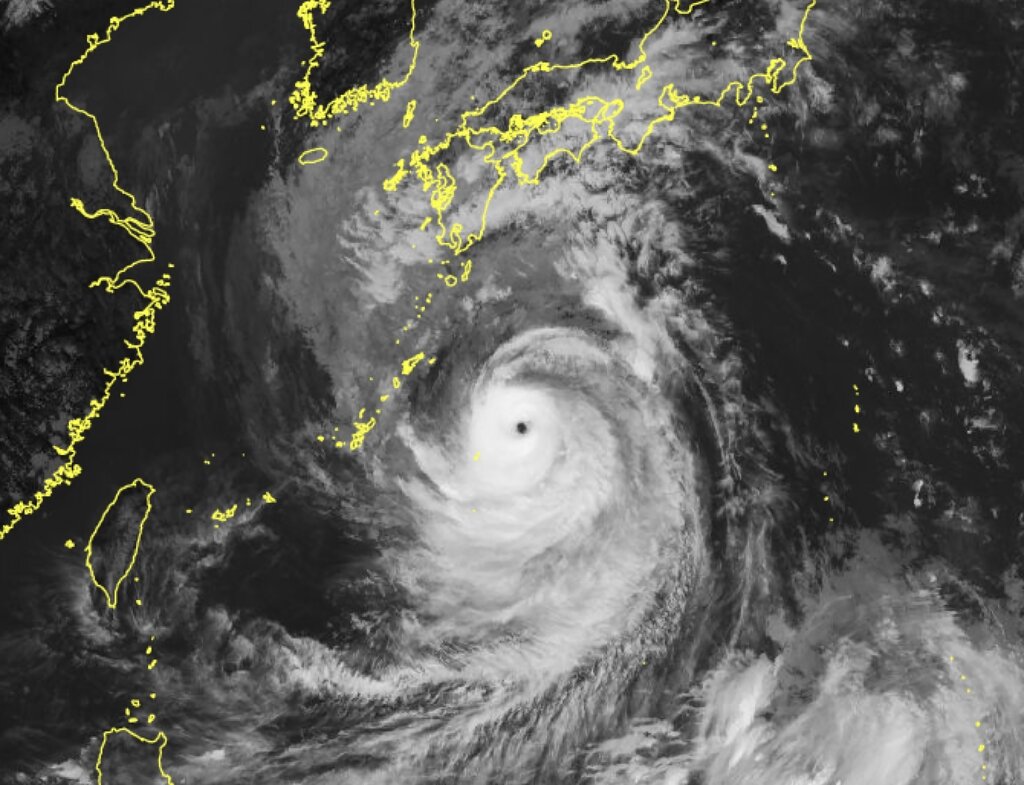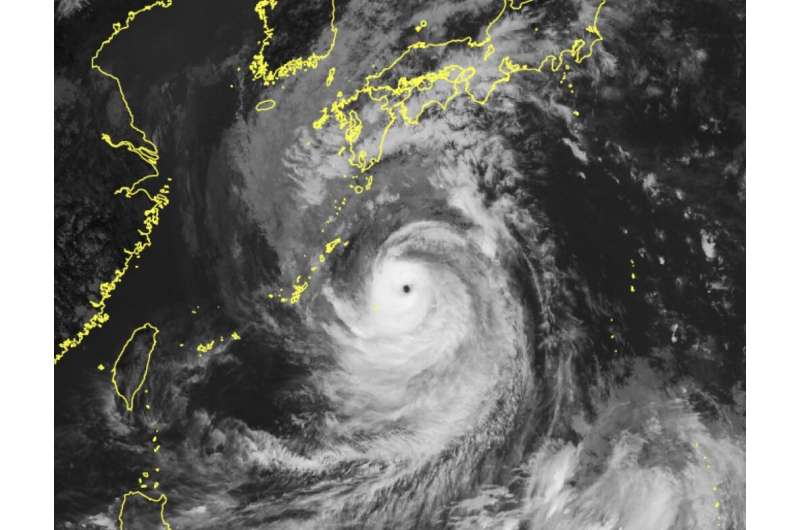

Japan’s weather agency on Saturday warned of a “very dangerous” typhoon heading towards the country’s southern Kyushu island, urging residents to evacuate before powerful wind hits the area.
Typhoon Nanmadol was carrying gusts up to 270 kilometres on Saturday near the remote Minami Daito island, 400 kilometres (250 miles) east of Okinawa island, the weather agency said.
The storm is expected to approach or make landfall on Sunday in the southern Kagoshima prefecture in Kyushu, then move north the following day before heading towards the main Japanese island.
“There are risks of unprecedented storms, high waves, storm surges, and record rainfall,” Ryuta Kurora, the head of the Japan Meteorological Agency’s forecast unit, told reporters.
“Maximum caution is required,” he said, urging residents to evacuate early.
“It’s a very dangerous typhoon.”
Kurora said the weather agency was likely to issue the highest alert for Kagoshima later in the evening.
“The wind will be so fierce that some houses might collapse,” he said, also warning of flooding and landslides.
Japan is currently in typhoon season and is hit by around 20 such storms a year, routinely seeing heavy rains that cause landslides or flash floods.
Scientists say climate change is increasing the severity of storms and causing extreme weather such as heat waves, droughts and flash floods to become more frequent and intense.
All Shanghai passenger flights cancelled as typhoon hits
© 2022 AFP
Citation:
Japan braces for ‘very dangerous’ Typhoon Nanmadol (2022, September 17)
retrieved 17 September 2022
from https://phys.org/news/2022-09-japan-braces-dangerous-typhoon-nanmadol.html
This document is subject to copyright. Apart from any fair dealing for the purpose of private study or research, no
part may be reproduced without the written permission. The content is provided for information purposes only.